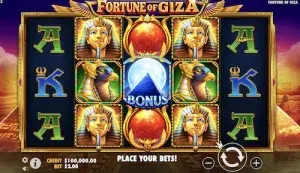In the 2025 World Series of Poker Main Event, the final hand between James Wasnock and Michael Mizrachi captivated the poker world with its intricate strategy and high stakes. Taking place at the Rio All-Suite Hotel & Casino, this climactic moment offered a thrilling conclusion to a tournament that had seen record-breaking attendance and prize pools, reflecting the increasing popularity of poker globally.
James Wasnock entered the final hand with a chip lead over Michael Mizrachi, a seasoned professional known for his aggressive play and multiple bracelet wins. The hand began with Wasnock on the button, holding Ace of Hearts and Ten of Spades, a strong but not invincible starting hand. Mizrachi, with a King of Clubs and Queen of Diamonds, was in the big blind position and faced a history of aggressive encounters against Wasnock, adding layers of psychological strategy to their decisions.
The betting started with Wasnock raising preflop, a move that is textbook in poker strategy when holding a position of power and a solid hand. Mizrachi, however, was not one to back down easily. He called the raise, setting the stage for potential fireworks on the flop.
The flop revealed a Ten of Diamonds, Seven of Hearts, and Four of Clubs. This gave Wasnock top pair with his Ace kicker, a strong position likely to encourage further betting. Mizrachi, on the other hand, received no immediate help from the board. However, his reputation and understanding of Wasnock’s tendencies suggested that he might try to bluff or semi-bluff in an attempt to take control of the hand.
As the betting round progressed, Wasnock made a calculated continuation bet, aiming to protect his top pair and probe the strength of Mizrachi’s hand. Mizrachi, quick to adapt and always a master of reading his opponents, saw an opportunity. He decided to check-raise, representing a potentially stronger hand than he actually possessed. This move put Wasnock in a difficult position, challenging his resolve and threatening his tournament life.
The turn brought the Eight of Clubs, adding potential straight draw possibilities. For Mizrachi, this card was an opportunity to apply pressure. He put forth a sizable bet, continuing to assert dominance. Wasnock, aware of the stakes and understanding the potential bluff, took his time to consider his options. Folding at this stage would relinquish his chip lead and hand momentum to Mizrachi. After a tense deliberation, he opted to call, trusting in his read and the strength of his hand.
On the river, the Nine of Hearts appeared, completing a potential straight for either player. Mizrachi, sensing the culmination of his strategy, went all-in, a decisive move that demanded the remainder of Wasnock’s chips. It was a pivotal moment, the kind that defines careers and legends. Wasnock, having navigated through Mizrachi’s aggression and mind games, now faced the ultimate decision. The pressure was immense, not just from the hand but from the significance of the Main Event title and the life-changing prize money.
In this critical situation, poker theory and psychological warfare intertwined. Wasnock replayed the hand in his mind, dissecting Mizrachi’s actions for any tells or inconsistencies. The crowd held its breath as he pondered, aware that this decision would either cement his victory or crown Mizrachi once more.
Ultimately, Wasnock’s call revealed his deep understanding of the game and his opponent. Mizrachi’s bluff was exposed, and Wasnock’s top pair held up, granting him the championship and a place in poker history. The audience erupted, and Wasnock was swarmed by well-wishers, champions recognizing a peer who had weathered the toughest of storms.
In the aftermath, analysts from GTO Wizard dissected the hand, praising Wasnock’s patience and resilience. They noted how his strategic play showcased not just technical acumen but also the human element of poker—a game of incomplete information where intuition and psychology play crucial roles. The decision to call on the river, despite the pressure, highlighted Wasnock’s confidence and understanding of Mizrachi’s tendencies.
However, some commentators offered a counterpoint, suggesting that Mizrachi’s aggressive playstyle was a calculated risk that, while unsuccessful, reflected the high-stakes nature of professional poker. “In poker, you have to be willing to risk it all to win it all,” they mused, acknowledging that Mizrachi’s approach has brought him success in the past and will likely do so again in the future.
The 2025 WSOP Main Event was a testament to the evolving strategies of poker, where players like Wasnock and Mizrachi push the boundaries of traditional play. The final hand between these two titans will be studied and debated by enthusiasts for years to come, a classic example of skill, nerve, and the ever-present dance of luck. As poker continues to grow as a global phenomenon, moments like these remind us of the game’s enduring allure and the stories that unfold at the table.

David Harrison stands tall in gambling journalism, marrying his firsthand casino experiences with a deep understanding of betting psychology. His articles transform complex gambling jargon into engaging tales of strategy and chance, making the world of betting accessible and enjoyable. David’s knack for narrative extends beyond print, making him a sought-after speaker on gambling trends and future bets. In the realm of gambling, David is both a scholar and a storyteller, captivating readers and listeners alike.
















